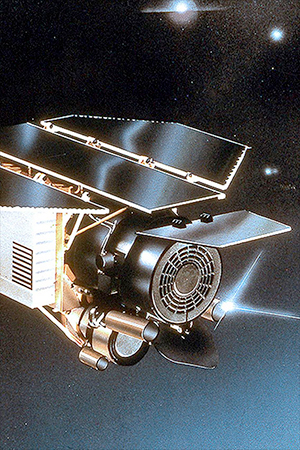October 2, 2011 — A German satellite plunged back to Earth on Saturday night (Oct. 22), being ripped apart as it re-entered the atmosphere but where its debris may have landed is not yet known.
"The german ROentgen SATellite (ROSAT) has re-entered Earth's atmosphere. There is currently no confirmation if pieces of debris have reached Earth's surface," German aerospace officials said in a statement.
The 2.7-ton dead satellite fell back to the planet sometime between 8:45 p.m. and 9:15 p.m. CDT (0145-0215 GMT Sunday). The re-entry marked the end of ROSAT's total of 21 years, four months and 23 days in space.
ROSAT was launched in 1990 to perform the first-ever all sky survey of X-ray sources with an imaging telescope. During its eight years operating in orbit — the observatory was decommissioned in 1999 after equipment failures — ROSAT detected roughly 110,000 stars, supernovas, and cosmic rays emitting X-rays.
Named for the German word for X-rays, Röntgenstrahlen, which in turn was coined for Wilhelm Röntgen who first detected the electromagnetic radiation we now call X-rays, ROSAT was a partnership between Germany, the United Kingdom and the United States. The German Aerospace Center (Deutsches Zentrum für Luft- und Raumfahrt, or DLR) managed the car-size satellite, which was equipped with an instrument built in England and was launched on a Delta II rocket from Cape Canaveral, Florida. The U.S. also served as a scientific partner on the project.
ROSAT was the second satellite to make an uncontrolled re-entry in as many months. On Sept. 23, NASA's Upper Atmosphere Research Satellite (UARS) fell back to Earth after 20 years. UARS's debris sank in a remote region of the Pacific Ocean.
Although ROSAT was significantly smaller than UARS — the environmental satellite was more than twice the size and mass of the X-ray observatory — almost twice as many ROSAT parts were expected to survive re-entry and make it to the ground.
"Based on the latest studies, it is thought possible that up to 30 individual debris items with a total mass of up to 1.6 tons might reach the surface of the Earth," DLR officials said before the satellite fell. "The X-ray optical system, with its mirrors and a mechanical support structure made of carbon-fiber reinforced composite — or at least a part of it — could be the heaviest single component to reach the ground."
If ROSAT debris fell on land or if it washed ashore after splashing down and was found by the public, the satellite parts would need to be returned — but to who was not yet made entirely clear.
The United Nations Outer Space Treaty, which since 1967 has been ratified by 100 nations, offers spacecraft owners the option of retaining their satellites, even if they are in pieces, and requesting any found parts to be returned. As ROSAT is a partnership between three countries, it is up to the agreements between Germany, the United Kingdom and United States to decide who has title over any found debris.
"These countries must then reach an agreement on which of them assumes the responsibility, for example the one holding 'registration status,'" said Bernhard Schmidt-Tedd, DLR's head of legal and business support, in a statement. "Then further to the law on registration, that decides which legal regime is then applicable. As a general rule, this is the party who has the interest in the launched object, i.e. the satellite operator." |
|

Artist's concept of the ROentgen SATellite, or ROSAT. (DLR)

ROSAT's mirror system, pictured here and manufactured by Carl Zeiss, had the smoothest mirror surfaces ever produced. (MPE) |
